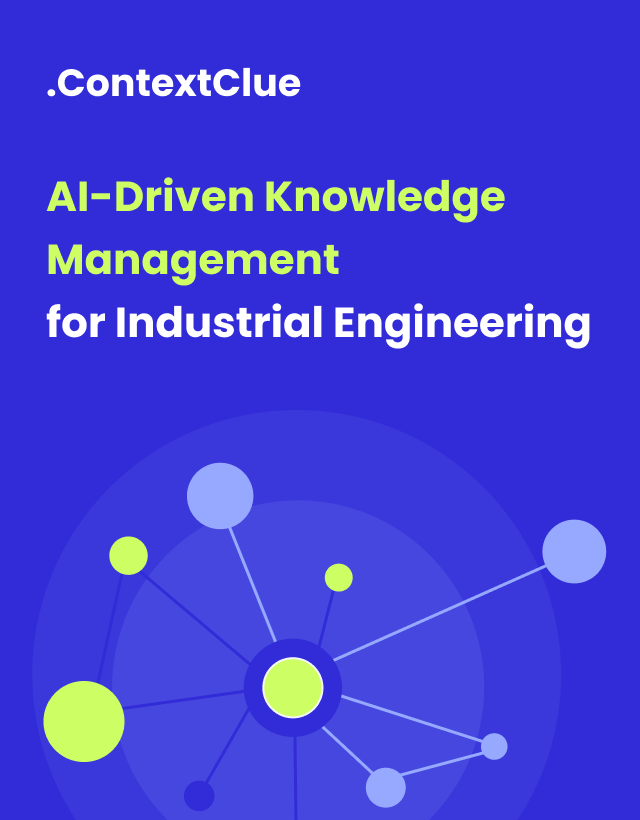
June 17, 2025
What is AI vs Gen AI?
Author:

CSO & Co-Founder
Reading time:
9 minutes
The business world is experiencing unprecedented Gen AI euphoria. ChatGPT reached 100 million users faster than any technology in history, and suddenly every company feels pressure to deploy generative AI or risk being left behind.
But this rush toward the newest, most talked-about AI technology is creating a dangerous blind spot: many organizations are choosing expensive, complex generative AI solutions for problems that traditional AI could solve better, faster, and cheaper.
The distinction between traditional AI and Generative AI isn’t just technical. Gen AI implementations typically cost 3-5x more than traditional AI projects and require substantially more computational resources, ongoing maintenance, and specialized expertise.
Yet many companies are defaulting to Gen AI because of market hype, not business logic.
Traditional AI and Generative AI represent distinct technological paradigms with different architectures, applications, and business implications.
Understanding this distinction has become critical for any organization serious about AI implementation, because the wrong choice can mean the difference between transformative efficiency gains and expensive technology theater that drains budgets without delivering measurable business value.
Why this matters for your company:
- Cost reality check: While traditional AI projects range from $50K-$2M with predictable ROI timelines, Gen AI implementations start at $100K for pilots and can reach $5M+ for enterprise deployments. More critically, Gen AI’s operational costs are 20-30% of initial investment annually, nearly double that of traditional AI systems due to intensive computational requirements and the need for continuous model updates.
- Problem-solution mismatch: If your primary business challenges involve optimizing existing processes, predicting outcomes from historical data, or automating rule-based decisions, traditional AI delivers superior ROI. Deploying Gen AI for these use cases is like hiring a creative director when you need an accountant, impressive credentials, wrong skill set, expensive outcome.
- Implementation complexity: Gen AI projects have higher failure rates and longer deployment cycles. They require specialized governance frameworks for content quality, intellectual property considerations, and bias mitigation that don’t exist for traditional AI applications. Organizations often underestimate these “hidden costs” when budgeting for Gen AI initiatives.
- The strategic imperative: Understanding when traditional AI serves your needs better than Gen AI isn’t about choosing older technology but about strategic resource allocation and competitive advantage through appropriate technology deployment.
The Fundamental Technical Divide
To understand the AI versus Gen AI distinction, it’s essential to grasp the core technologies that power each approach.
Both rely on foundational AI technologies but apply them in fundamentally different ways.
Core AI Technologies
Machine Learning forms the backbone of both traditional AI and Gen AI systems. This umbrella term encompasses algorithms that learn patterns from data without being explicitly programmed for every scenario. Within machine learning, several key approaches define how AI systems operate:
- Supervised Learning powers most traditional AI applications. These systems learn from labeled datasets where inputs are paired with correct outputs, like email spam detection trained on thousands of emails marked as “spam” or “legitimate.” The algorithm learns to identify patterns that distinguish between categories, then applies this knowledge to classify new, unseen data.
- Unsupervised Learning finds hidden patterns in data without labeled examples. Clustering algorithms group similar customers for targeted marketing, while anomaly detection identifies unusual patterns in network traffic that might indicate security threats. These techniques excel at discovering structure in complex datasets where the relationships aren’t immediately obvious.
- Reinforcement Learning trains AI systems through trial and error, using rewards and penalties to optimize decision-making. This approach powers autonomous vehicles learning to navigate traffic and game-playing AI that masters complex strategic challenges through millions of simulated experiences.
- Deep Learning uses neural networks with multiple layers to process complex patterns in data. Convolutional Neural Networks (CNNs) revolutionized image recognition, while Recurrent Neural Networks (RNNs) enabled breakthroughs in sequential data processing like time series analysis and early natural language processing.
- Natural Language Processing (NLP) enables AI systems to understand and work with human language. Traditional NLP focused on rule-based parsing and statistical analysis, while modern transformer-based architectures have revolutionized how machines comprehend context, meaning, and linguistic nuance.
How Traditional AI and Gen AI Leverage These Technologies
Traditional AI typically combines supervised learning with domain-specific algorithms to solve well-defined problems. A fraud detection system might use supervised learning to classify transactions, reinforcement learning to adapt to new fraud patterns, and deep learning to analyze transaction sequences. The focus remains on analysis and prediction within established parameters.
Generative AI leverages these same foundational technologies but combines them differently. Large Language Models use transformer architectures (a type of deep learning) with self-supervised learning on massive text datasets. Instead of learning to classify or predict from labeled examples, they learn to generate by predicting missing parts of text sequences, internalizing the statistical relationships that govern language, logic, and meaning.
The architectural differences are profound. Traditional AI models typically require smaller, structured datasets and can achieve high performance with focused training data. They operate efficiently on conventional hardware infrastructure and provide interpretable decision pathways crucial for regulatory compliance and risk management.
Generative AI demands massive datasets and significant computational resources. Training large language models requires thousands of GPUs and generates models with billions or trillions of parameters. These systems operate more like “black boxes,” making their decision processes difficult to interpret, a critical consideration for applications requiring explainable outcomes.
Traditional AI vs Generative AI: Technology Comparison
| Technology Aspect | Traditional AI | Generative AI |
|---|---|---|
| Core Technologies Used | Supervised Learning, Reinforcement Learning, Classical ML algorithms, Decision Trees, SVM, Random Forest | Self-supervised Learning, Transformer architectures, Large Language Models, GANs, Diffusion Models |
| Neural Network Types | CNNs for images, RNNs for sequences, Feed-forward networks | Transformer networks, Variational Autoencoders, Generative Adversarial Networks |
| Training Methodology | Learns from labeled input-output pairs | Learns by predicting missing/masked parts of input data |
| Data Processing | Structured data with clear labels and categories | Unstructured data across multiple modalities (text, images, audio) |
| Model Architecture | Task-specific, optimized for particular problem domains | General-purpose, can handle multiple types of content generation |
| Computational Complexity | Moderate, can run on CPUs or single GPUs | High, requires distributed GPU clusters for training and inference |
| Memory Requirements | Typically MB to low GB range | Often 10GB+ for inference, TB for training |
| Training Time | Hours to days for most applications | Weeks to months for large models |
| Model Updates | Retrain on new labeled data | Fine-tune or prompt engineer existing models |
Business Applications: Where Each Technology Excels
The practical applications reveal why this distinction matters for business strategy. Traditional AI has matured into a reliable operational tool with measurable ROI across specific use cases.
Predictive analytics systems help organizations forecast demand, optimize inventory, and prevent equipment failures.
The technology’s strength lies in handling structured, repetitive tasks where consistency and accuracy are paramount.
Generative AI revolutionizes content-heavy business functions. Marketing teams generate personalized campaigns at scale, creating thousands of variations tailored to specific audience segments.
The key difference: traditional AI optimizes what exists, while Gen AI creates what doesn’t. This fundamental distinction determines which problems each technology can solve and what kind of business value they deliver.
Gen AI adoption has been explosive, 71% of organizations now use Gen AI regularly, up from 33% in 2023. This represents one of the fastest technology uptakes in business history. But the numbers reveal a more complex reality: while 74% of advanced Gen AI initiatives meet or exceed ROI expectations, 42% of AI projects overall still show zero return on investment.
This failure rate highlights the importance of strategic alignment between technology choice and business objectives.
Organizations succeeding with traditional AI typically focus on operational efficiency and cost reduction, achieving measurable returns through process automation and decision optimization. Those succeeding with Gen AI prioritize innovation, customer engagement, and content creation at scale.
AI Consulting vs Gen AI Consulting: Choosing the Right Expertise
The distinction between traditional AI and Generative AI extends beyond technology selection – it fundamentally shapes the type of consulting expertise your organization needs. AI consulting and Gen AI consulting represent different service categories with distinct skill sets, methodologies, and success metrics.
What AI Consulting Delivers
Traditional AI consulting focuses on leveraging data science and machine learning to solve analytical business problems. These consultants excel at transforming raw data into actionable insights through predictive modeling, process automation, and decision optimization.
Their core competencies include statistical analysis, data engineering, algorithm selection, and model validation.
AI consulting projects typically follow structured methodologies with clear success criteria. Consultants work with historical datasets to build models that predict future outcomes, classify new inputs, or optimize existing processes.
The deliverables are often measurable: improved accuracy rates, reduced processing times, or cost savings through automation.
A successful AI consulting engagement might involve building a predictive maintenance system that reduces equipment downtime by 40%, or implementing a fraud detection algorithm that catches 95% of suspicious transactions with minimal false positives.
The value proposition centers on operational efficiency and data-driven decision making.
What Gen AI Consulting Offers
Gen AI consulting operates in a fundamentally different domain, focusing on content creation, creative automation, and conversational AI implementations.
These specialists understand prompt engineering, fine-tuning techniques, content governance frameworks, and the unique challenges of managing AI-generated outputs at scale.
Gen AI consulting projects are inherently more creative and exploratory. Consultants help organizations implement chatbots that engage customers naturally, develop content generation systems that produce marketing materials at scale, or create AI assistants that augment human creativity in product development. The success metrics often include content quality, user engagement, creative output volume, and brand consistency.
A typical Gen AI consulting engagement might involve deploying a customer service chatbot that handles 80% of inquiries with high satisfaction scores, or implementing a content generation system that produces personalized marketing emails for different customer segments while maintaining brand voice and compliance standards.
Hybrid Consulting: The Strategic Advantage
The most sophisticated organizations benefit from consulting partners who understand both traditional AI consulting and Gen AI consulting approaches. These hybrid consultants can assess your specific business challenges and recommend the optimal technology mix, avoiding the common trap of forcing innovative Gen AI solutions onto operational problems better solved with traditional AI methods.
When evaluating potential partners, look for consultants who can clearly articulate when to deploy each approach and demonstrate experience across both domains. The best consulting relationships involve partners who save you from expensive missteps by matching technology capabilities to business objectives.
Category:







